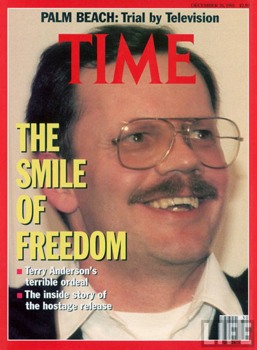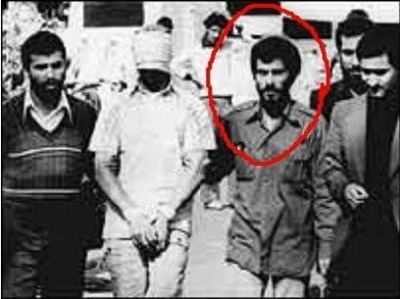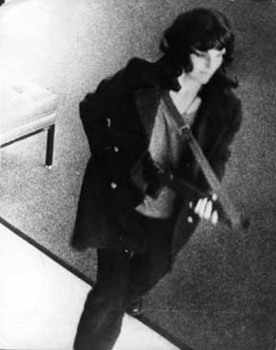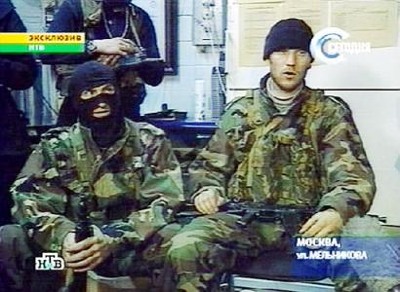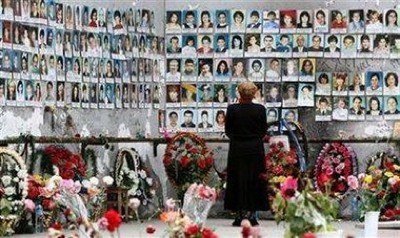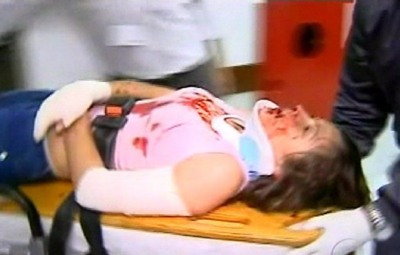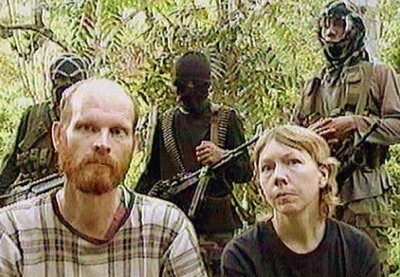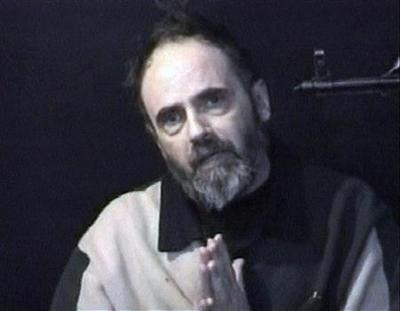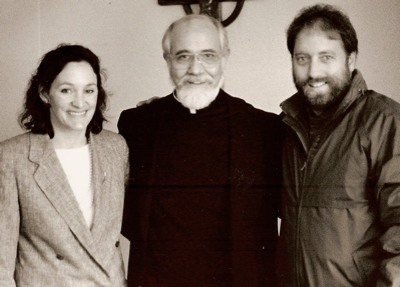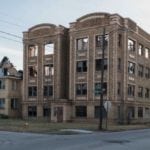 Weird Stuff
Weird Stuff  Weird Stuff
Weird Stuff  Mysteries
Mysteries 10 Tragic Disappearances and Deaths in Joshua Tree National Park
 History
History 10 Ways Childhood Really Sucked in the Old West
 Music
Music 10 Name Origins of Famous Bands from the 1990s
 Religion
Religion 10 Biggest Turnarounds by the Catholic Church
 Weird Stuff
Weird Stuff 10 Unbelievable Times Laws Had Unintended Consequences
 Humans
Humans Ten Historic Women Who Deserve Way More Credit Than They Got
 Movies and TV
Movies and TV 10 Films That Spawned Major Lawsuits
 History
History Ten Times Towns Were Wiped Off the Face of the Earth
 Creepy
Creepy 10 of the Most Disturbingly Haunted Public Houses in the UK
 Weird Stuff
Weird Stuff 10 Niche Subcultures That Are More Popular Than You Might Think
 Mysteries
Mysteries 10 Tragic Disappearances and Deaths in Joshua Tree National Park
 History
History 10 Ways Childhood Really Sucked in the Old West
Who's Behind Listverse?

Jamie Frater
Head Editor
Jamie founded Listverse due to an insatiable desire to share fascinating, obscure, and bizarre facts. He has been a guest speaker on numerous national radio and television stations and is a five time published author.
More About Us Music
Music 10 Name Origins of Famous Bands from the 1990s
 Religion
Religion 10 Biggest Turnarounds by the Catholic Church
 Weird Stuff
Weird Stuff 10 Unbelievable Times Laws Had Unintended Consequences
 Humans
Humans Ten Historic Women Who Deserve Way More Credit Than They Got
 Movies and TV
Movies and TV 10 Films That Spawned Major Lawsuits
 History
History Ten Times Towns Were Wiped Off the Face of the Earth
 Creepy
Creepy 10 of the Most Disturbingly Haunted Public Houses in the UK
10 Famous Hostage Situations
The practice of taking hostages is very ancient, and has been used constantly in negotiations with conquered nations, and in cases such as surrenders, armistices and the like, where the two belligerents depended for its proper carrying out on each others good faith. The Romans were accustomed to take the sons of tributary princes and educate them at Rome, thus holding a security for the continued loyalty of the conquered nation and also instilling a possible future ruler with ideas of Roman civilization. This list looks at 10 modern examples of hostage taking.
Ingrid Betancourt Pulecio is a Colombian-French politician, former senator, anti-corruption activist and Nobel Peace Prize nominee. Betancourt was kidnapped by the Revolutionary Armed Forces of Colombia (FARC) on 23 February 2002 and was rescued by Colombian security forces six and a half years later on 2 July 2008. The rescue operation, dubbed Operation Jaque, rescued Betancourt along with 14 other hostages (three Americans and 11 Colombian policemen and soldiers). In all, she was held captive for 2,321 days after being taken while campaigning for the Colombian presidency as a Green. She had decided to campaign in rebel controlled areas despite warnings from the government, police and military not to do so. Her kidnapping received worldwide coverage, particularly in France, because of her dual French citizenship. She has received multiple international awards, such as the Légion d’honneur. In 2008 she received the Concord Prince of Asturias Award.
On March 16, 1985, Terry Anderson had just finished a tennis game when he was abducted from the street in Beirut, placed in the trunk of a car and taken to a secret location where he was imprisoned. For the next six years and nine months he was held captive, being moved periodically to new sites. His captors were a group of Hezbollah Shiite Muslims who were supported by Iran in supposed retaliation for Israel’s use of U.S. weapons and aid in its 1982-83 strikes against Muslim and Druze targets in Lebanon. Several other U.S. citizens were held at the same time. At first Anderson was held alone, though he became aware that other captives were also nearby. Anderson was the last hostage to be accounted for, finally being released December 4, 1991 to a joyful reunion with his family. His daughter Sulome Anderson was born three months after his capture and had not seen her father until this point.
The Iran hostage crisis was a diplomatic crisis between Iran and the United States where 52 U.S. diplomats were held hostage for 444 days from November 4, 1979 to January 20, 1981, after a group of Islamist students took over the American embassy in support of the Iranian revolution. The episode reached a climax when after failed attempts to negotiate a release, the United States military attempted a rescue operation, Operation Eagle Claw, on April 24, 1980, which resulted in an aborted mission, the crash of two aircraft and the deaths of eight American service members and one Iranian civilian. It ended with the signing of the Algiers Accords in Algeria on January 19, 1981. The hostages were formally released into United States custody the following day, just minutes after the new American president Ronald Reagan was sworn in.
Patty Hearst, now known as Patricia Hearst Shaw, is an American newspaper heiress, socialite, and occasional actress. The granddaughter of publishing magnate William Randolph Hearst and great-granddaughter of self-made millionaire George Hearst, she gained notoriety in 1974 when, following her kidnapping by the Symbionese Liberation Army (SLA), she ultimately joined her captors in furthering their cause. Apprehended after having taken part in a bank robbery with other SLA members, Hearst was imprisoned for almost two years before her sentence was commuted by President Jimmy Carter. She was later granted a presidential pardon by President Bill Clinton in his last official act before leaving office. Hearst’s actions have often been attributed to Stockholm syndrome, in which hostages sympathize with the aims of their captors.
The Moscow theatre hostage crisis, also known as the 2002 Nord-Ost siege, was the seizure of a crowded Moscow theatre on October 23, 2002 by about 40-50 armed Chechen rebel fighters who claimed allegiance to the separatist movement in Chechnya. They took 850 hostages and demanded the withdrawal of Russian forces from Chechnya and an end to the Second Chechen War. The siege was officially led by Movsar Barayev. After a two-and-a-half day siege, Russian Spetsnaz forces pumped an unknown chemical agent into the building’s ventilation system and raided it. Officially, 39 of the terrorists were killed by Russian forces, along with at least 129 and possibly many more of the hostages (including nine foreigners). All but one of the hostages who died during the siege were killed by the toxic substance pumped into the theatre to subdue the militants.
The Beslan school hostage crisis (also referred to as the Beslan school siege or Beslan massacre) began when a group of armed terrorists, demanding an end to the Second Chechen War, took more than 1,100 people, including some 777 children, hostage on September 1, 2004, at School Number One (SNO) in the town of Beslan, North Ossetia-Alania, an autonomous republic in the North Caucasus region of the Russian Federation. On the third day of the standoff, Russian security forces stormed the building using tanks, thermobaric rockets and other heavy weapons. The hostage taking was carried out by the Riyadus-Salikhin Reconnaissance and Sabotage Battalion of Chechen Martyrs group lead by Shamil Basayev who was an independent warlord at the time. The tragedy led to security and political repercussions in Russia, most notably a series of government reforms consolidating power in the Kremlin and strengthening of the powers of President of Russia. As of 2008, there are many aspects of the crisis still in dispute, including how many militants were involved, their preparations, and whether some of them had escaped. Questions about the government’s management of the crisis have also persisted, including disinformation and censorship in news media, repressions of journalists who rushed to Beslan, the nature and content of negotiations with the militants, the responsibility for the bloody outcome, and the government’s use of possibly excessive force.
The Eloá Pimentel hostage crisis refers to the kidnapping, hostage situation and murder of Brazilian 15-year-old girl Eloá Cristina Pimentel, which was accompanied by the shooting of her friend Nayara Silva, both committed by Eloá’s ex-boyfriend Lidemberg Alves. The incident received major media exposure not only because of the shootings, but also because of the mistakes committed by the police of São Paulo, and also because Eloá was held as a hostage for 100 hours – the longest kidnapping ever registered in the state of São Paulo.
In October 13, 2008, Eloá Pimentel, Nayara da Silva and two friends were working on a school project, when Eloás’ 22-year-old ex-boyfriend, Lidemberg Fernandes Alves, broke into her apartment in Santo André, holding a pistol. He soon released the two boys, but held Eloá and Nayara. The GATE (Grupo de Ações Táticas Especiais, or Special Tactical Actions Group) closely followed the case. On October 16, da Silva was eventually released by Alves, but she was suggested by the police to return to the apartment. She accepted, and was held hostage again. Hours later, shots were heard coming from the apartment, and the GATE decided to storm in the apartment. They eventually stopped and immobilized him, but not before he could put two bullets in Eloá (one in the head and other in the groin), and one in Nayara’s face. Eloá, severely wounded, was taken to the hospital, but was brain dead due to brain damage and died.
The Burnhams were United States Protestant missionaries in the Philippines with New Tribes Mission for 17 years from 1986. The couple was among a larger group kidnapped by the Abu Sayyaf Group, an Islamist separatist terrorist group operating in the southern Philippines, on May 27, 2001. While most of the group were murdered by the kidnappers or freed after ransoms were paid, the Burnhams were in captivity for a year and a few days. The kidnappers demanded $1,000,000 for their release. A ransom of $300,000 was paid, yet the kidnappers refused to release them. During the eventual rescue attempt by the Philippine Army on June 7, 2002, Martin was killed by three gunshots in the chest and Gracia was wounded in her right thigh. Since her release and the death of her husband, Gracia Burnham has returned to the United States with their three children. She has written two books about her experiences, In the Presence of my Enemies (2003) and To Fly Again (2005). She has also set up The Martin and Gracia Burnham Foundation.
Roy Hallums is an American contractor who was kidnapped in Iraq on November 1, 2004. He was held in Iraq for 311 days and freed on September 7, 2005. On November 1, 2004, 20 gunmen stormed the compound where Hallums and his co-workers were working, in the upscale Mansour District of Baghdad. Hallums was taken hostage along with Roberto Tarongoy of the Philippines, Inus Dewari of Nepal, and three Iraqis. Dewari and the Iraqis were later released soon after their abduction. A videotape of Hallums was released by insurgents on January 25, 2005. It is unclear when the tape was made. Hallums had a long beard, and was seated with a gun pointed at his head. “I have been arrested by a resistance group in Iraq,” Hallums said. “I am asking for help because my life is in danger, because it has been proved that I work for American forces.” Hallums didn’t appeal to American President Bush but did to Libyan president Muammar al-Gaddafi to help earn his release. Gaddafi later called for Hallum’s release. Hallums was freed on September 7, 2005, along with an Iraqi captive, when American troops raided a farmhouse 15 miles south of Baghdad. The location was apparently given by an Iraqi detainee. When coalition troops arrived, the kidnappers had fled.
Altogether, Roy Hallums had been captive ten months and seven days. He said that he had been bound and gagged for much of the time, but doctors described him as being in “good health.” After his release, he called his daughter and identified himself by saying “This is Dad.” The freed hostage also delivered this statement: “I want to thank all of those who were involved in my rescue — to those who continuously tracked my captors and location, and to those who physically brought me freedom today. To all of you, I will be forever grateful.”
Father Lawrence Martin Jenco, a native of Joliet, Illinois, was taken hostage in Beirut by five armed men in January 1985, while serving as director of Catholic Relief Services there. He was held for 564 days before being released and allowed to return to the United States. In his book, Bound to Forgive, Fr. Jenco relives his kidnapping and imprisonment, and offers portraits of the Shiite Muslims who held him captive. He also discusses how his faith sustained him. He spent much of his time in prayer and meditation, making a rosary out of threads from a sack, and celebrated clandestine Masses whenever he could. At times he was imprisoned with other hostages (including Terry Anderson) who worshiped together as “The Church of the Locked Door”. He spent much of his time chained and blindfolded, and was allowed to use the toilet only once a day. Fr. Jenco suffered serious eye infections and other health problems as a result of his captivity. In changing from one hiding place to another, he was bound with tape and placed in stifling hiding places in trucks, lest he be found by soldiers or police inspecting a vehicle. He also suffered beatings by the guards. Toward the end of his captivity, Jenco was asked by one of his guards if he forgave his captors. Fr. Jenco tells in his book that at that moment he realized that he was being called to forgive, to “let go of revenge, retaliation and vindictiveness”.
This article is licensed under the GFDL because it contains quotations from Wikipedia.

